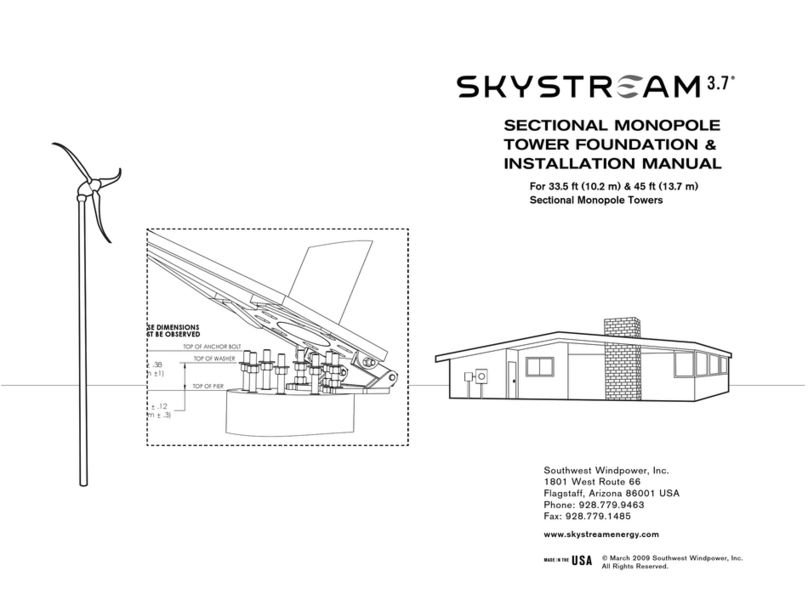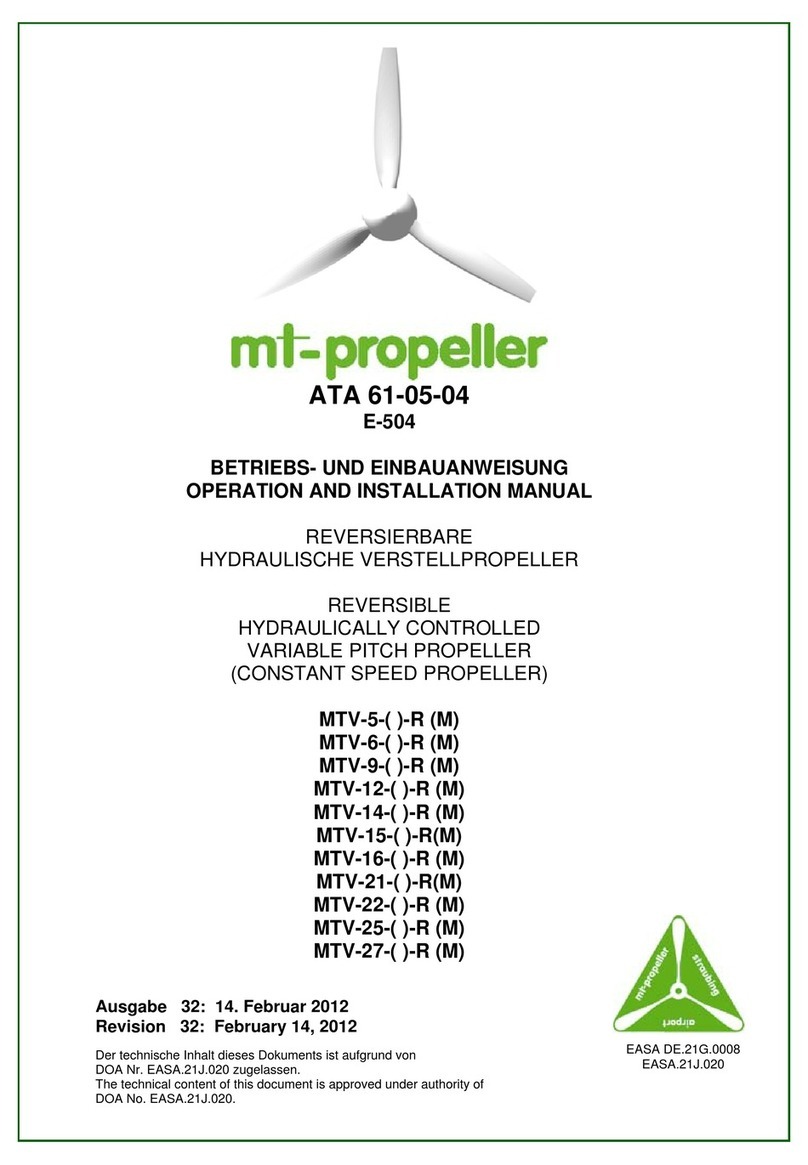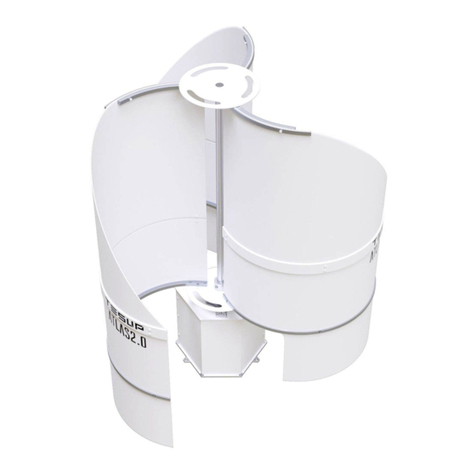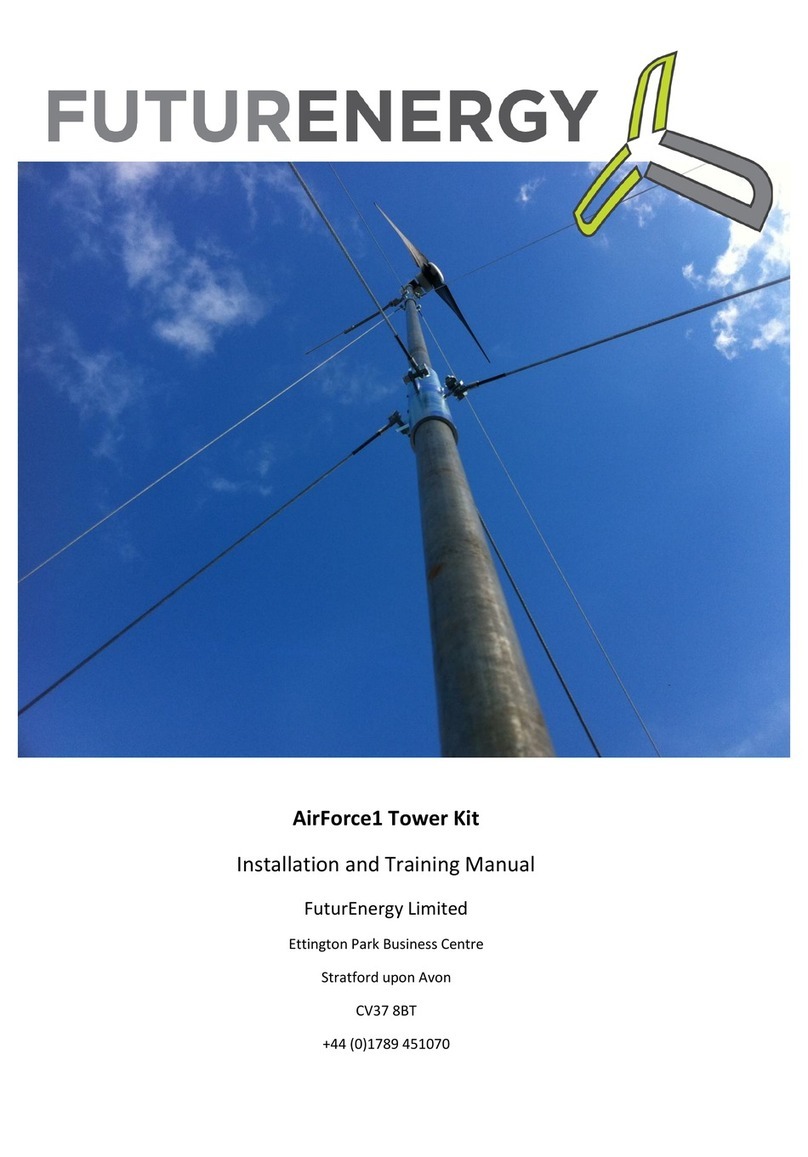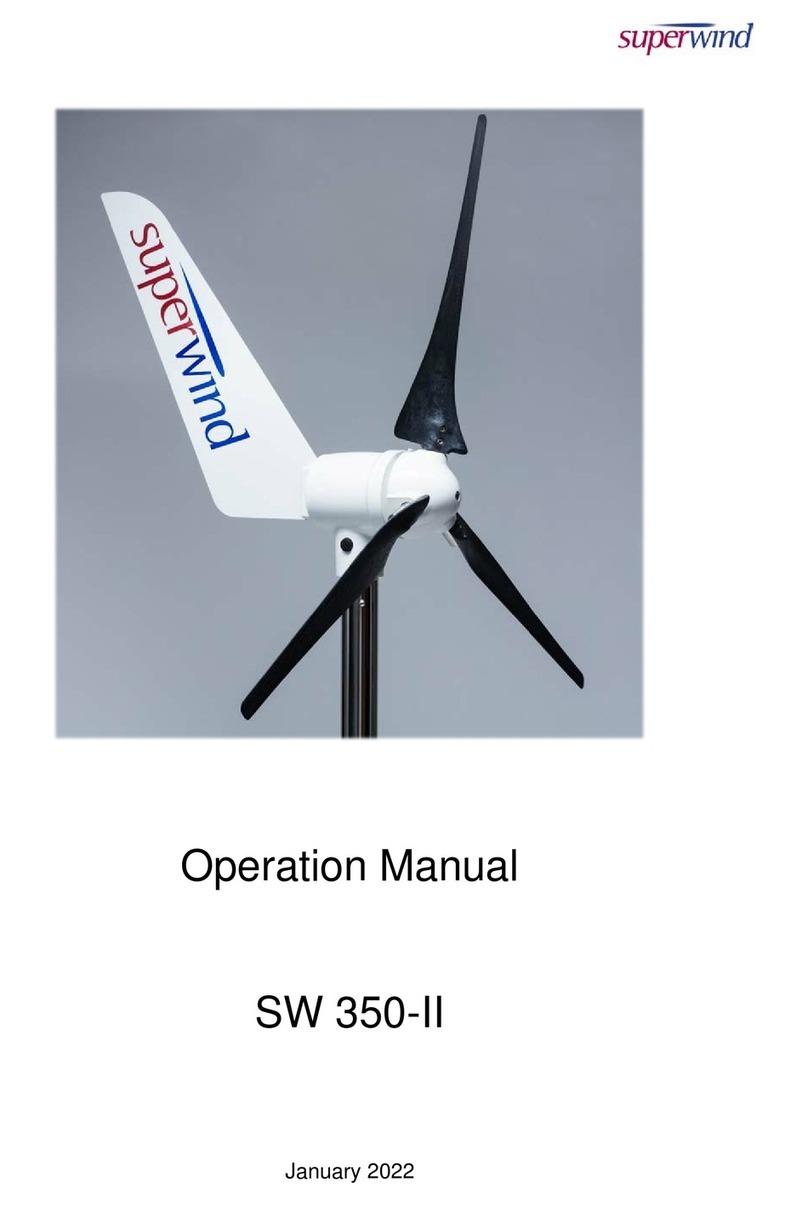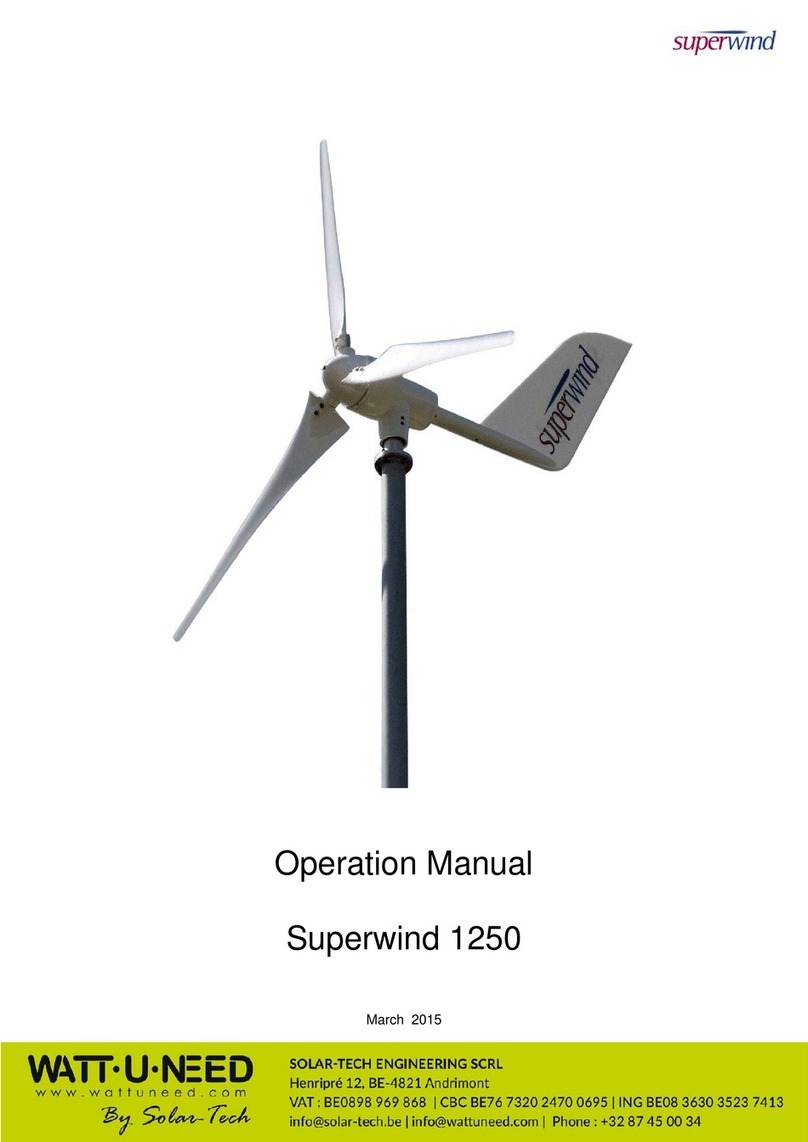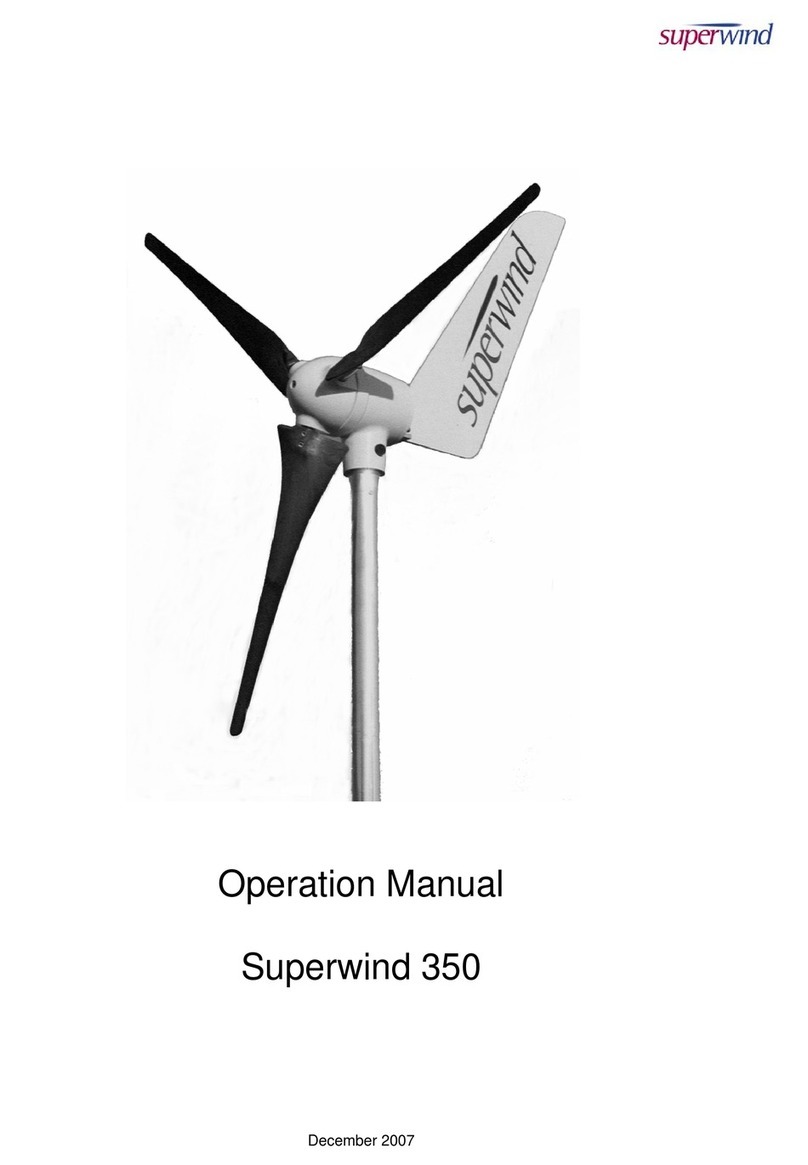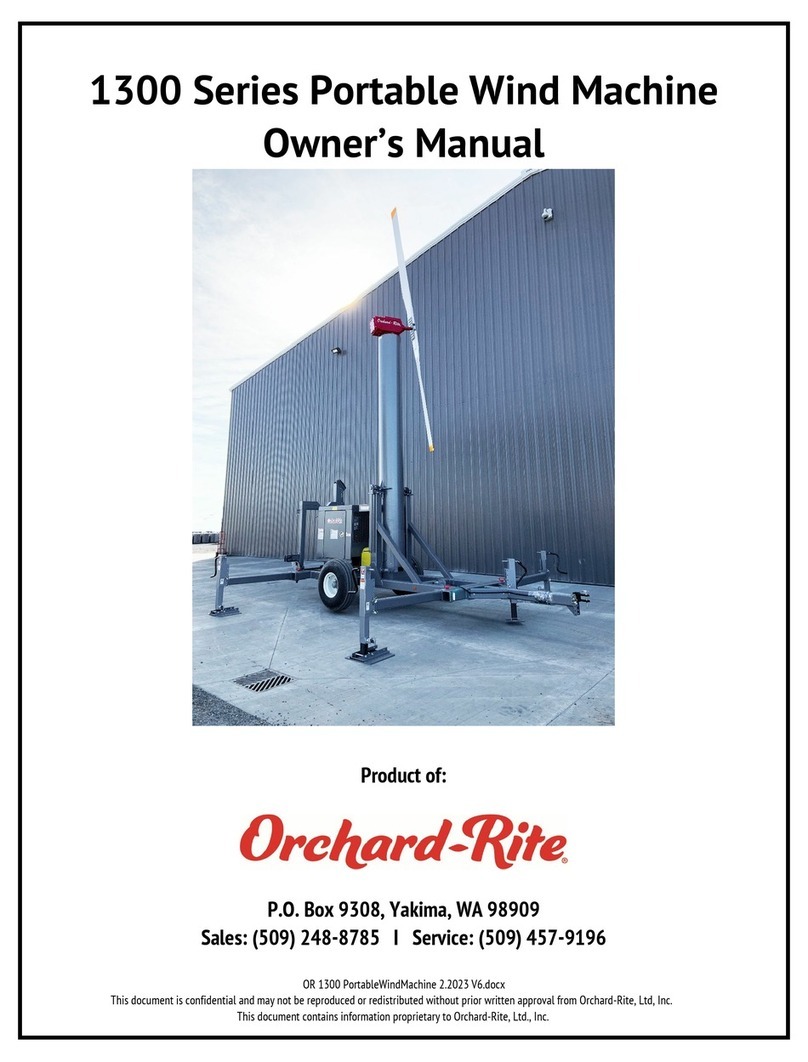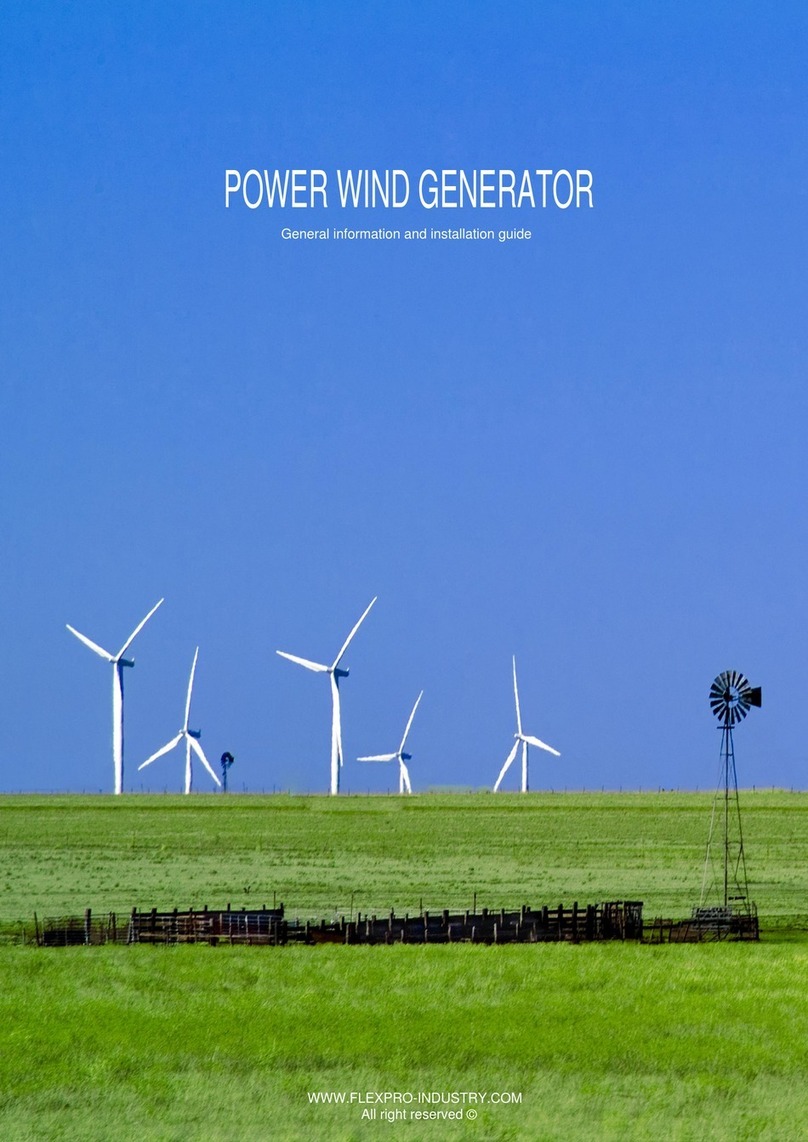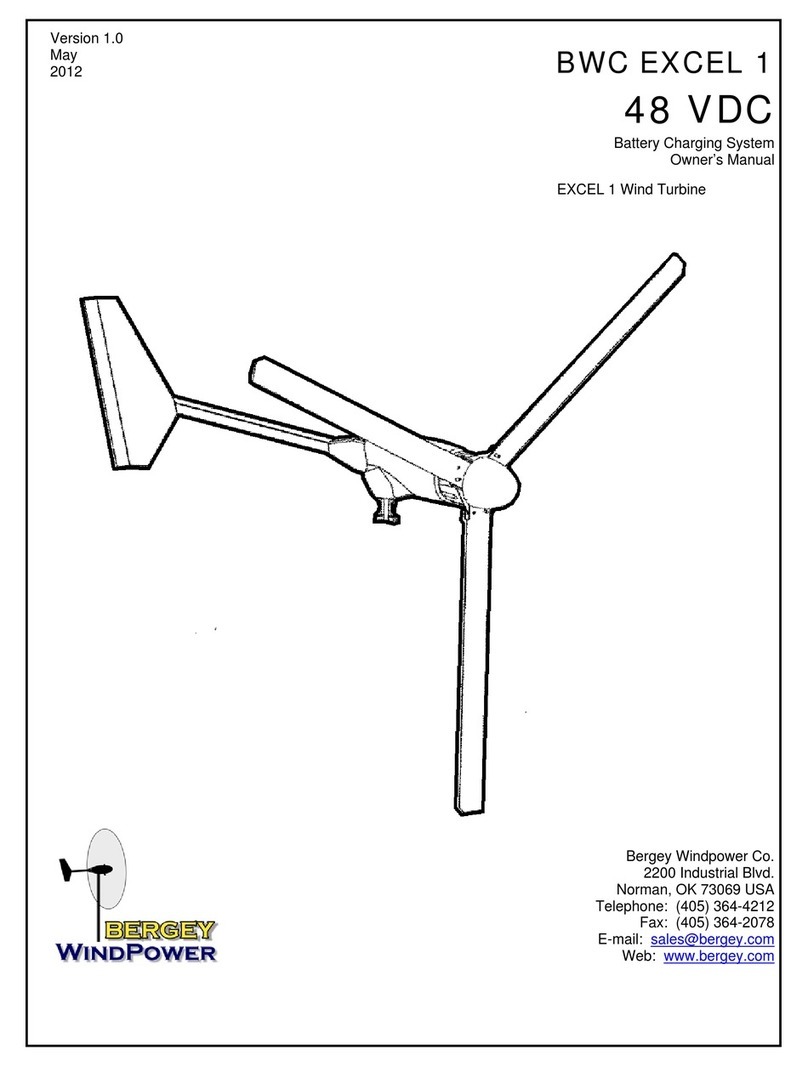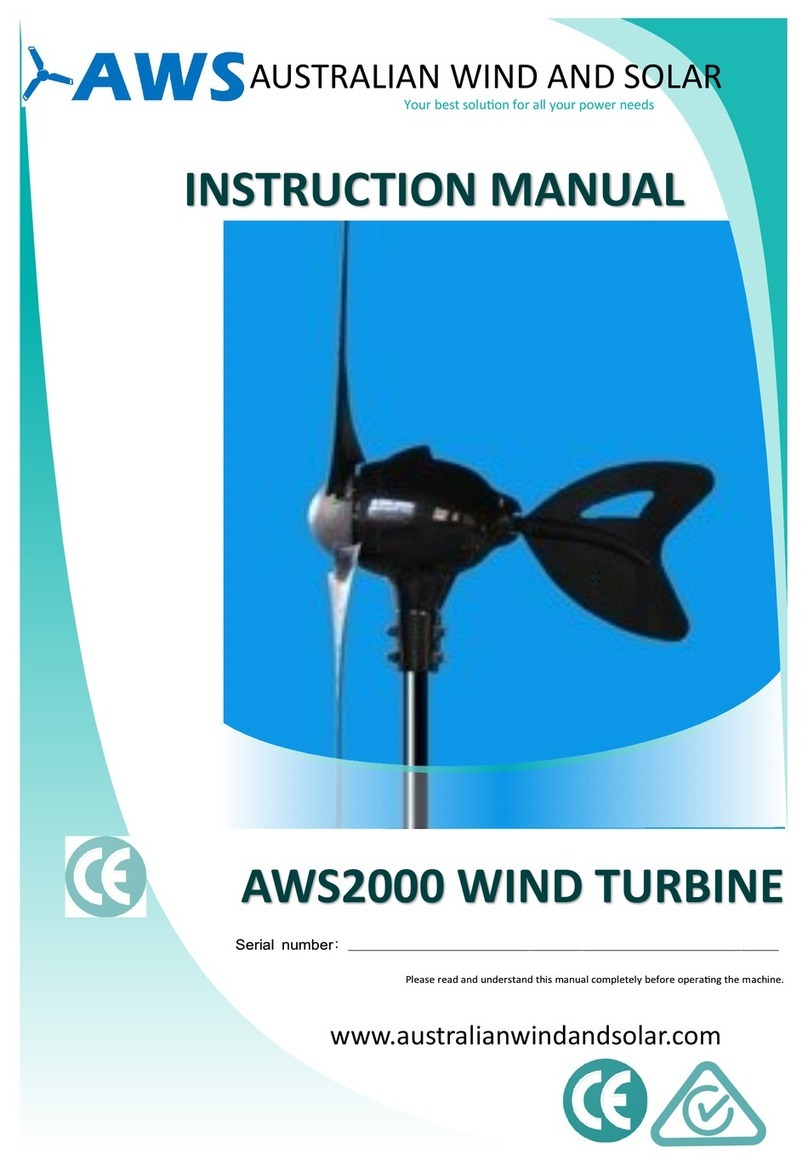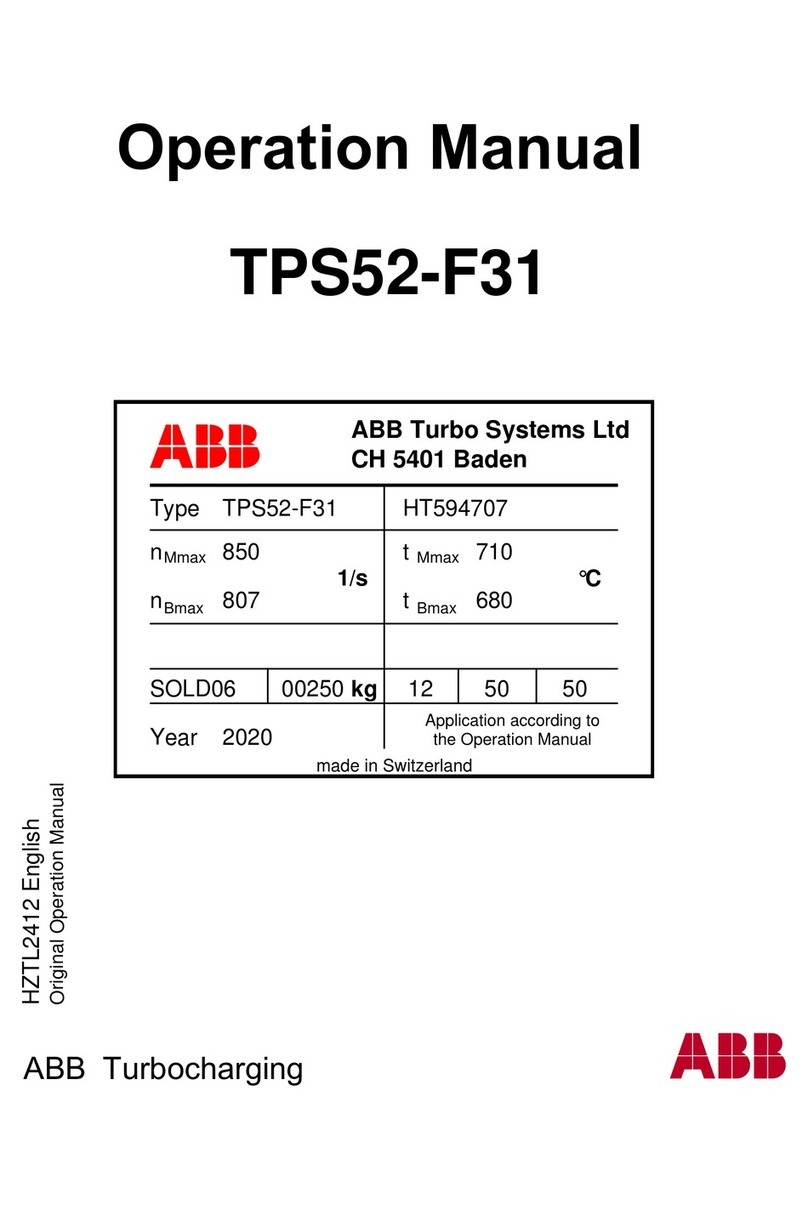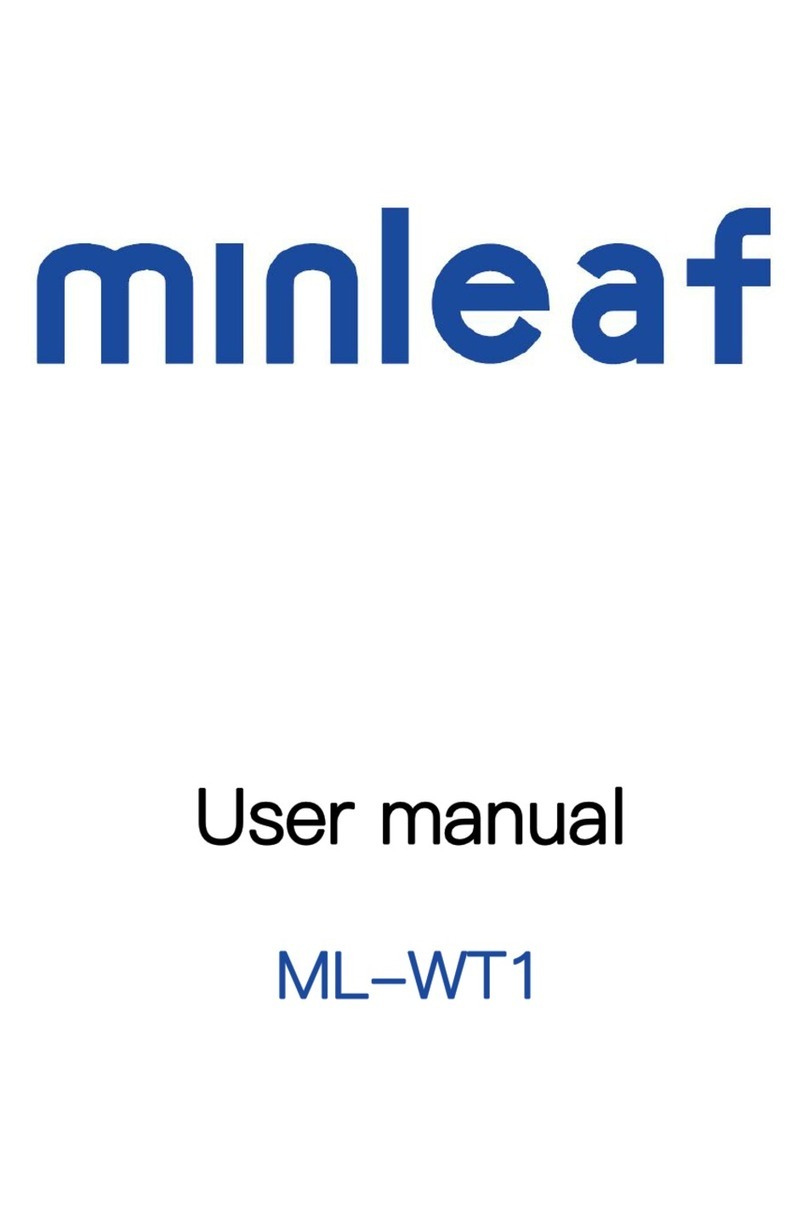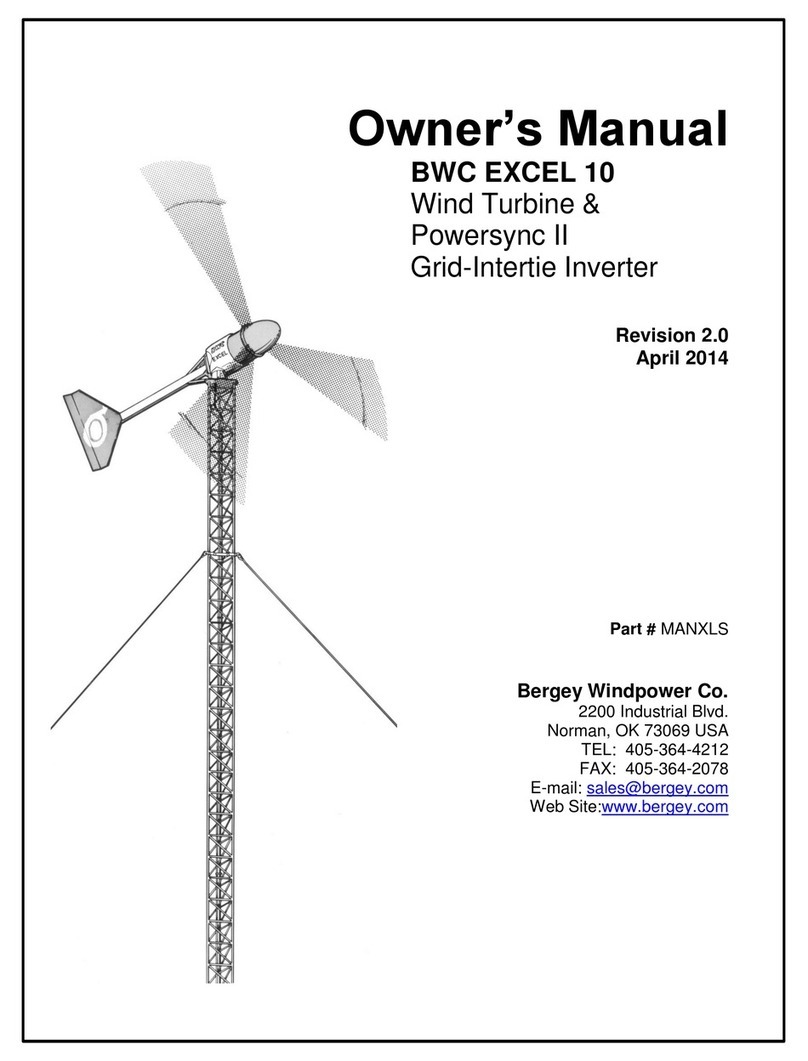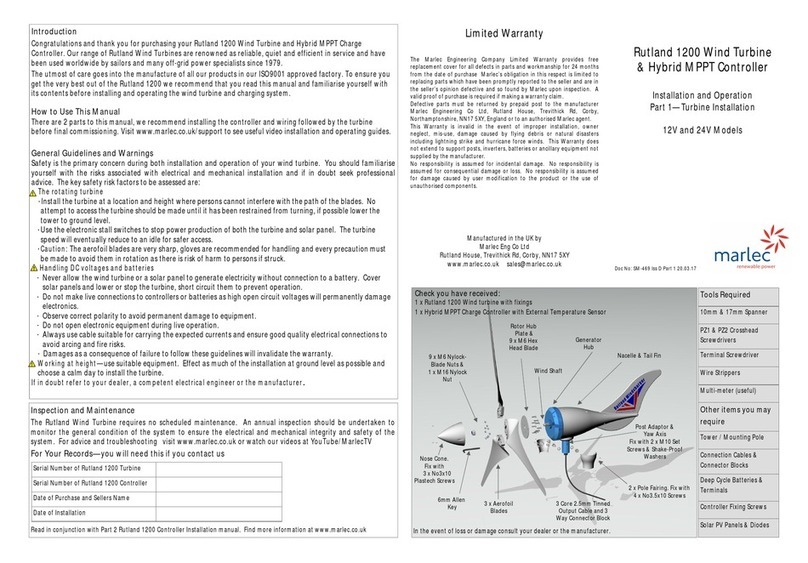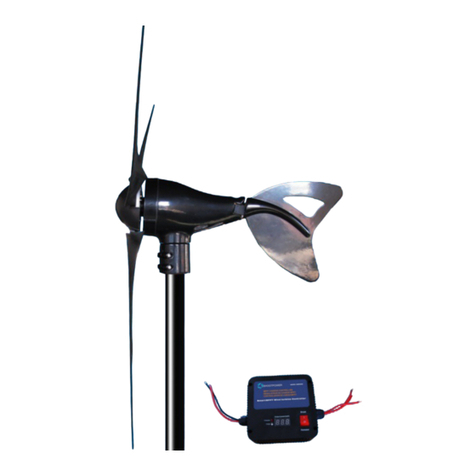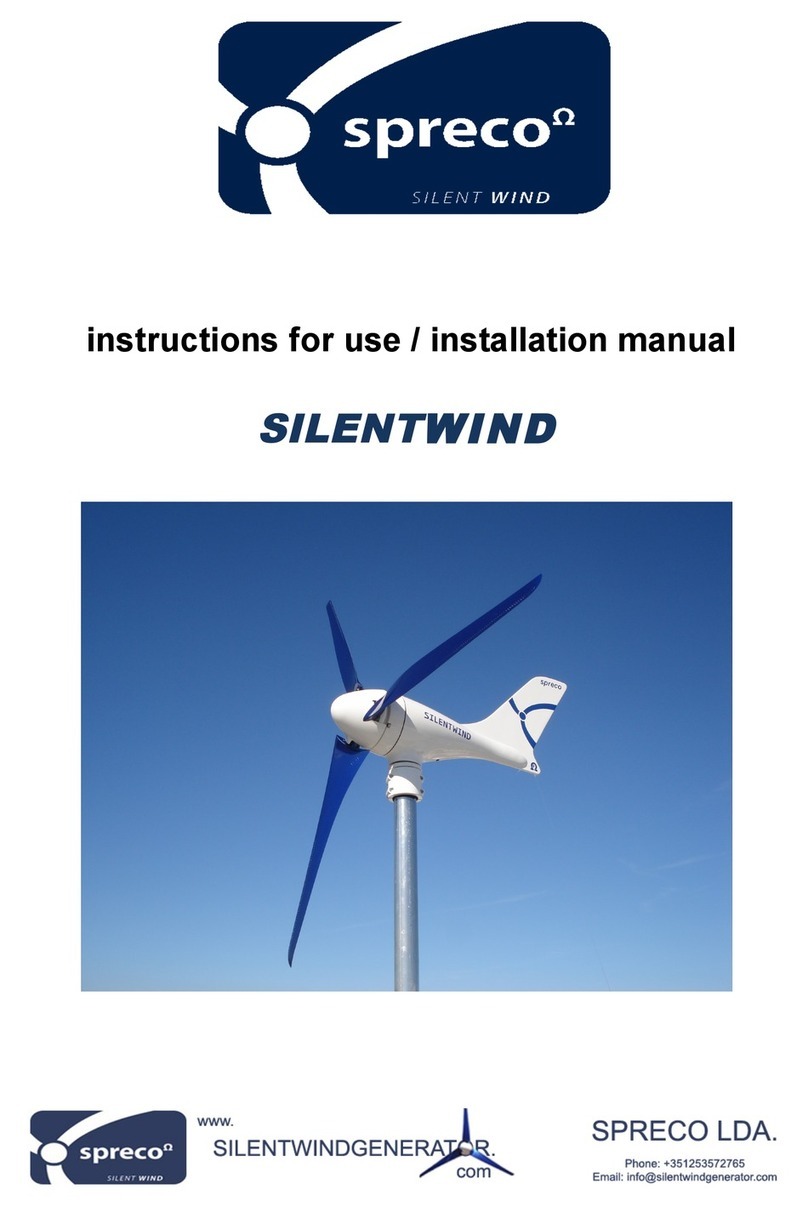
V 01-2017 www.superwind.com
3
Table of Contents
Section Description Page No.
OVERVIEW............................................................................................................... 2
Table of Contents.................................................................................................... 3
1. GENERAL INFORMATION AND REFERENCES
1.1. Company profile ............................................................................................ 5
1.2. Labelling ........................................................................................................ 5
1.3. Range of application ...................................................................................... 6
2. WARRANTY
2.1. Warranty......................................................................................................... 7
2.2. Warranty period ............................................................................................. 7
2.3. To obtain warranty service............................................................................. 7
2.4. Limitations...................................................................................................... 7
2.5. Others ............................................................................................................ 7
2.6. Expenses and Responsibilities ...................................................................... 8
2.7. Claims ............................................................................................................ 8
3. SAFETY INSTRUCTIONS
3.1. Potential sources of danger ........................................................................... 9
3.1.1. Mechanical dangers ....................................................................... 9
3.1.2. Electrical dangers........................................................................... 9
3.1.3. Dangers when mounting ...............................................................10
4. SPECIFICATIONS
4.1. Operational free space required ...................................................................12
4.1.1. Dimensions....................................................................................12
4.2. Technical data...............................................................................................13
4.3. Functional description / Special features ......................................................13
5. PREPARATIONS FOR ASSEMBLY
5.1. Packing list....................................................................................................15
5.2. Tools .............................................................................................................16
5.3. Optional accessories ....................................................................................16
5.4. Electrical components...................................................................................16
6. ELECTRICAL COMPONENTS AND CONNECTIONS
6.1. General information ......................................................................................17
6.2. Wiring diagrams ............................................................................................17
6.2.1. Recommended charge regulator....................................................17
6.2.1.1. SCR Marine Charge Regulator .......................................17
6.2.1.2. Diversion Load Resistor...................................................19
6.3. System components ....................................................................................19
6.3.1. Wires ..............................................................................................19
6.3.1.1 WAG Wire size chart for 12 Volt version .........................20
6.3.1.2 WAG Wire size chart for 24 Volt version .........................20
6.3.2. Strain relief ....................................................................................21
6.3.3. Polarity............................................................................................22
6.3.4. Batteries .........................................................................................22
6.3.4.1. Charging batteries ...........................................................22
6.3.4.2. SCR Marine charge regulator (with diversion load control). 24
6.3.4.3. Diversion load resistor .....................................................25
6.3.5. Fuses..............................................................................................25
6.3.6. Stop switch .....................................................................................25
6.4. Grounding .....................................................................................................26
7. SUPERWIND 350 GENERATOR ASSEMBLY
7.1. Precautions during mounting ........................................................................27
